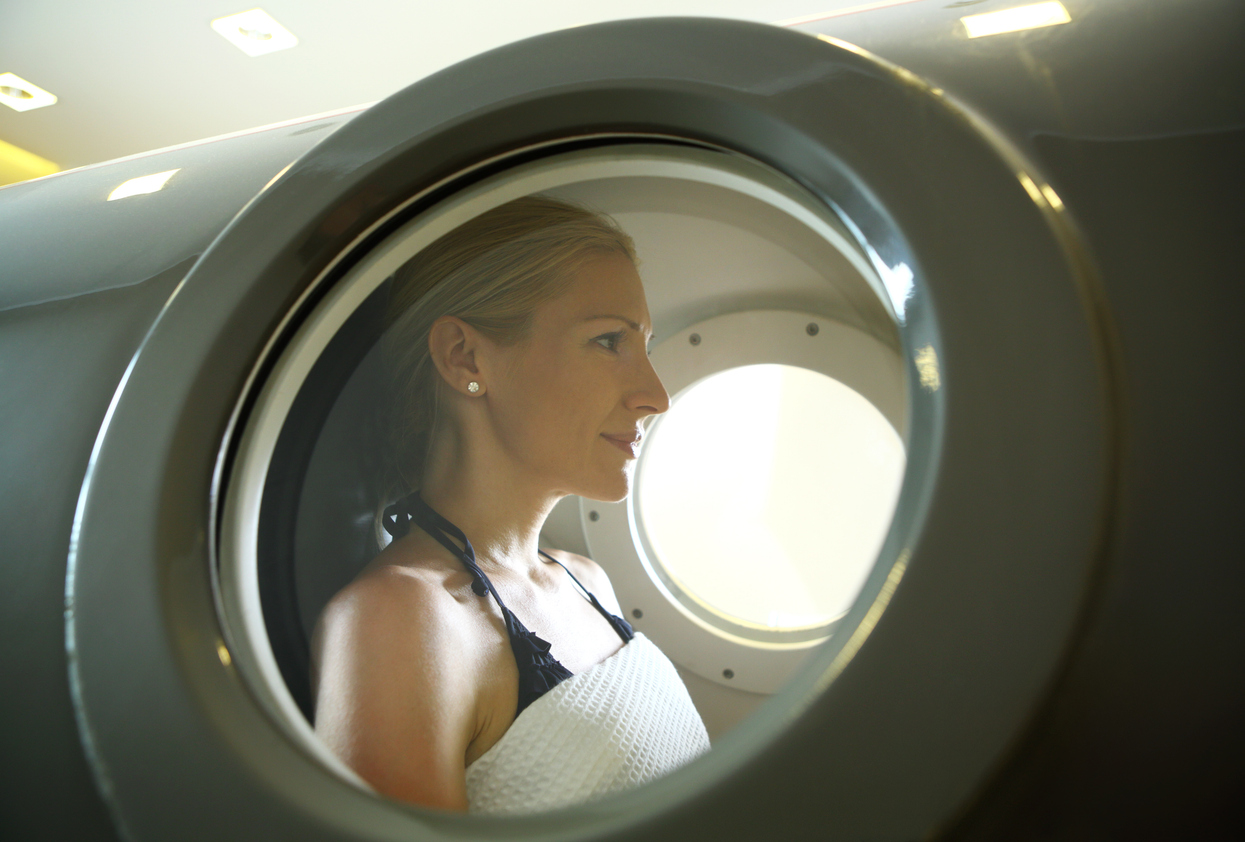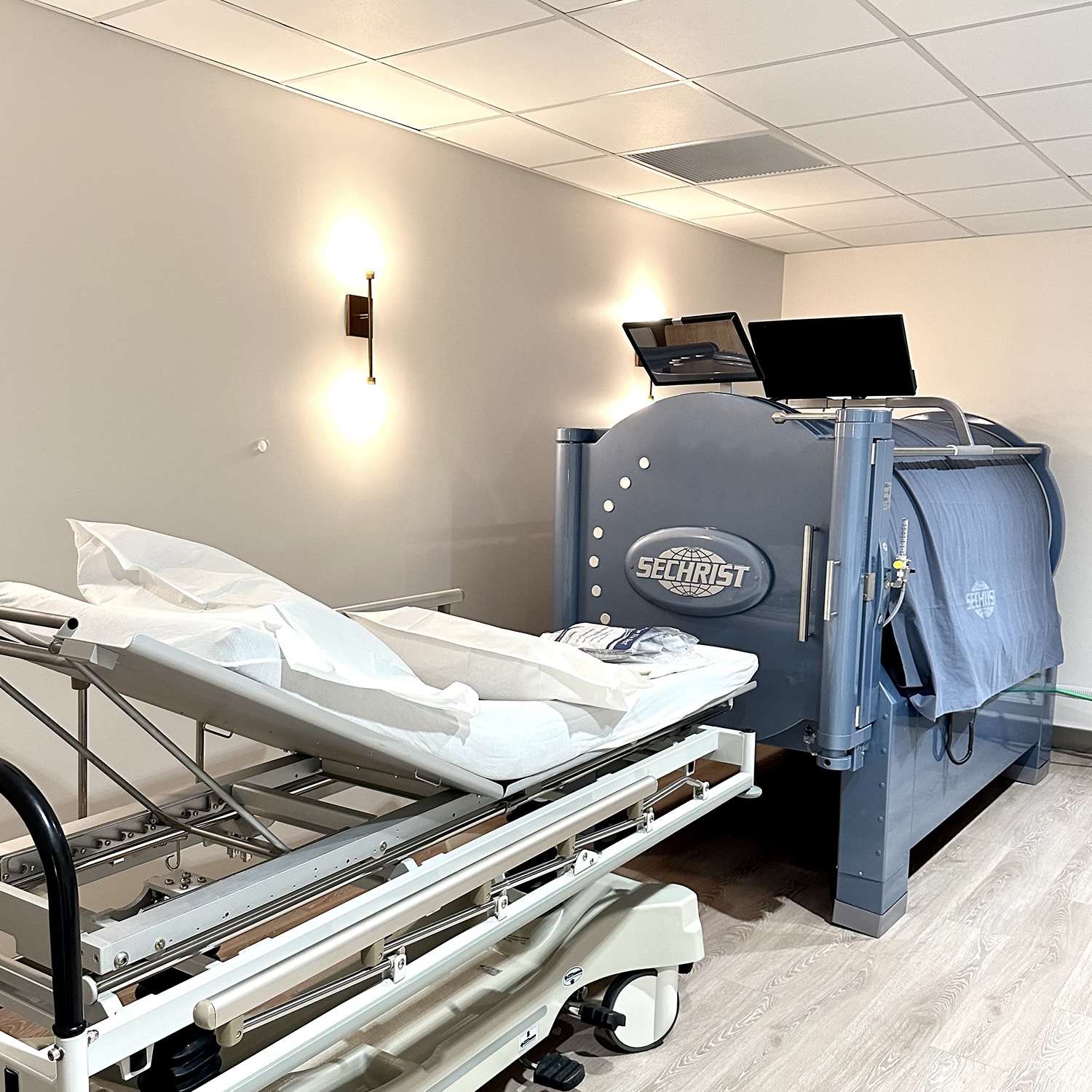
When it comes to facelift surgery, most patients are focused on two things: achieving beautiful, natural results—and healing as quickly and comfortably as possible. While skilled surgical technique and personalized aftercare are central to a smooth recovery, there’s a growing interest in advanced technologies that can optimize healing and enhance outcomes. One of the most promising of these is hyperbaric oxygen therapy (HBOT).
Originally developed for divers and burn victims, HBOT is now being embraced in the world of aesthetic surgery as a powerful tool to reduce swelling, speed tissue repair, and even minimize the risk of complications after facial surgery. But how does it work? And is it worth incorporating into your facelift recovery plan?
In this article, we’ll explore how HBOT supports healing after facelift surgery, what the science says, and who can benefit most from this cutting-edge approach.
What Is Hyperbaric Oxygen Therapy (HBOT)?
Hyperbaric oxygen therapy involves breathing 100% pure oxygen in a pressurized chamber, typically at 1.5 to 2.5 times the normal atmospheric pressure. Under these conditions, the lungs can absorb significantly more oxygen than usual, up to 15 times more, which is then delivered through the bloodstream to tissues throughout the body.
This surplus of oxygen serves as fuel for healing. It supports the formation of new blood vessels, boosts immune function, and accelerates cellular repair, making it especially beneficial during the vulnerable post-operative period.
HBOT has long been used in hospitals for treating wounds, radiation injuries, carbon monoxide poisoning, and diabetic ulcers. Now, it’s gaining traction in the world of elective cosmetic surgery, where faster healing and reduced downtime are key patient goals.
Why Facelift Recovery Matters
Facelift (rhytidectomy) surgery is a sophisticated procedure designed to reposition and rejuvenate the face and neck. Modern deep plane facelift techniques lift not just the skin, but the underlying musculature (SMAS layer), offering long-lasting, natural-looking results. However, because this technique involves deeper layers of tissue and manipulation of the lymphatic and vascular systems, it requires a well-managed recovery to avoid complications and ensure optimal outcomes.
In the days and weeks after surgery, the body works hard to repair bruising, swelling, and surgical trauma. During this phase, even small improvements in tissue oxygenation, inflammation control, and lymphatic flow can have a noticeable impact on comfort and appearance.
That’s where HBOT comes in.

The Science of Oxygen and Healing
Oxygen is critical to every stage of wound healing, from the initial inflammatory phase to tissue regeneration and remodeling. Here’s how enhanced oxygen delivery from HBOT plays a role in facelift recovery:
1. Accelerated Wound Healing
Oxygen is essential for fibroblast activity and collagen synthesis, which are key to forming healthy, firm skin and tissue after surgery. HBOT saturates tissues with oxygen, supporting faster closure and improved tensile strength in healing incisions.
2. Reduced Swelling and Bruising
One of the biggest complaints after facelift surgery is swelling, especially around the cheeks, jawline, and neck. HBOT has been shown to reduce edema by promoting vasoconstriction (tightening of blood vessels) and enhancing lymphatic drainage.
3. Anti-Inflammatory Effects
HBOT downregulates pro-inflammatory cytokines and upregulates anti-inflammatory signals, helping the body resolve inflammation more efficiently. This not only leads to greater comfort but also reduces the likelihood of prolonged or uneven swelling.
4. Improved Blood Flow
Facelift surgery often temporarily compromises local blood flow due to swelling, tissue manipulation, and the use of surgical instruments. HBOT can stimulate angiogenesis, the formation of new blood vessels, helping to restore circulation and nourish recovering tissue.
5. Infection Prevention
Oxygen boosts the function of white blood cells, which are critical in fighting bacteria and preventing postoperative infections. Enhanced immune activity also helps clear cellular debris and supports the overall healing environment.
What to Expect During a Hyperbaric Oxygen Session
HBOT is typically administered in either a monoplace (single-person) or multiplace (multi-person) chamber. Most cosmetic surgery patients receive therapy in a private monoplace chamber—a comfortable, clear acrylic tube where they can recline, listen to music, or watch a screen during the session.
A typical session includes:
• Pressurization phase: The chamber is gradually pressurized to around 2.0 ATA (atmospheres absolute).
• Oxygen delivery: The patient breathes 100% oxygen for about 60 to 90 minutes.
• Decompression: The chamber is slowly returned to normal pressure over 10–15 minutes.
The process is painless, though patients may experience mild ear popping (similar to changes in airplane altitude) during pressurization. Many find the experience relaxing, and even rejuvenating.
When to Start HBOT After a Facelift
The timing of HBOT can influence its effectiveness. Some practices offer a session within 24 hours of surgery to jump-start healing, while others recommend waiting 48–72 hours until the initial phase of swelling stabilizes. The optimal schedule often includes 3–6 treatments in the first two weeks, depending on the patient’s healing response and the surgeon’s preferences.
Patients at higher risk of complications, such as those with diabetes, smoking history, or poor vascularity, may benefit from additional treatments.
Who Benefits Most from HBOT After Facelift Surgery?
While virtually any facelift patient may experience faster healing and reduced discomfort with HBOT, certain individuals are particularly good candidates:
• Patients with tight surgical timelines (e.g., planning to attend a wedding or photoshoot soon after surgery)
• Those prone to bruising or poor wound healing
• Individuals with prior radiation exposure to the head or neck
• Older patients or those with circulation issues
• Patients undergoing revision facelift surgery
• Those seeking premium recovery options
HBOT is also increasingly popular among high-profile patients, performers, and public figures looking to shorten their downtime and enhance the appearance of their results early on.
What the Research Says
While HBOT’s benefits for wound healing and ischemic tissue injury are well-documented in medical literature, studies specifically focused on facelift surgery are limited but growing.
Some key findings include:
• A 2020 study published in Plastic and Reconstructive Surgery found that HBOT significantly reduced bruising and swelling in patients after facial cosmetic surgery compared to standard recovery protocols.
• A 2016 review in Aesthetic Surgery Journal noted that HBOT may reduce flap necrosis and skin loss in facial surgery patients, particularly those with risk factors like smoking.
• Ongoing clinical trials are investigating HBOT’s effects on patient satisfaction, scar quality, and complication rates in aesthetic surgery.
Though larger, randomized studies are still needed, early data are encouraging and align with the broader body of evidence supporting HBOT in surgical healing.
Does Insurance Cover It?
Because facelift surgery is elective, insurance typically does not cover postoperative HBOT. However, many practices now offer hyperbaric sessions as an add-on service in recovery packages, or through partnerships with local wound care or med spa facilities.
While costs vary, patients can expect to pay between $150–$300 per session, depending on location and chamber type. Some surgeons include a few HBOT sessions as part of concierge recovery plans or VIP services.
Other Recovery Benefits of HBOT
Beyond healing incisions and reducing swelling, HBOT has some secondary benefits that can enhance the overall recovery experience:
• Reduced fatigue and mental fog common after anesthesia and surgery
• Improved skin texture and tone through increased collagen production
• Immune support during a time when the body is vulnerable
• Faster resolution of neck tightness or fullness by supporting lymphatic drainage
These added perks contribute to patients feeling better, faster, both physically and emotionally, after their procedure.
Is It Safe?
When performed in a medical setting by trained professionals, HBOT is considered very safe. Side effects are rare and usually mild, including:
• Temporary ear pressure or discomfort
• Mild fatigue after sessions
• Sinus pressure or mild light-headedness
More serious risks, such as barotrauma, oxygen toxicity, or vision changes, are extremely rare and primarily associated with prolonged or improperly administered therapy. Patients with certain medical conditions (like untreated pneumothorax) may not be eligible, so a consultation with the treating physician is essential before starting therapy.
How to Include HBOT in Your Facelift Recovery Plan
If you’re considering HBOT as part of your post-facelift care, here are some practical tips:
• Talk to your surgeon: Not every practice offers HBOT, but many can refer you to a trusted local provider. Your surgeon will help determine if you’re a good candidate.
• Plan ahead: It’s helpful to book sessions in advance, especially if you’re operating on a tight recovery timeline.
• Commit to a short series: For best results, plan on multiple sessions within the first 2–3 weeks after surgery.
• Stay consistent: For the most comprehensive recovery, pair HBOT with other healthy habits, such as hydration, nutrition, sleep, and proper wound care.
Conclusion: Breathe In, Heal Faster
While there’s no single magic bullet for healing after facelift surgery, hyperbaric oxygen therapy offers a compelling, science-backed way to support the body’s natural repair processes. By flooding tissues with oxygen, HBOT helps reduce swelling, accelerate recovery, and optimize the appearance of your results, especially in the critical early weeks following surgery.
For the right patient, and as part of a thoughtful recovery plan, HBOT can be a valuable adjunct to modern facelift surgery. If you’re looking to minimize downtime and enhance your post-op experience, it’s worth discussing hyperbaric oxygen therapy with your facial plastic surgeon.


